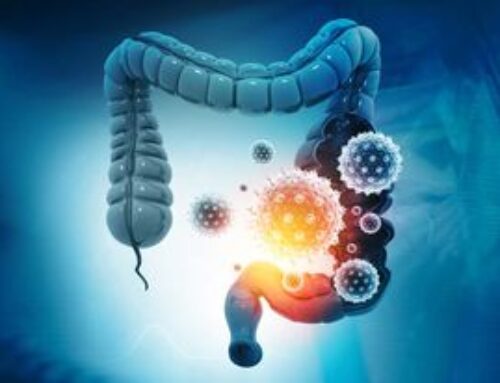Original article posted on by Dr. Francis Collins
For most people, pain eventually fades away as an injury heals. But for others, the pain persists beyond the initial healing and becomes chronic, hanging on for weeks, months, or even years. Now, we may have uncovered an answer to help explain why: subtle differences in a gene that controls how the body responds to stress.
In a recent study of more than 1,600 people injured in traffic accidents, researchers discovered that individuals with a certain variant in a stress-controlling gene, called FKBP5, were more likely to develop chronic pain than those with other variants [1]. These findings may point to new non-addictive strategies for preventing or controlling chronic pain, and underscore the importance of NIH-funded research for tackling our nation’s opioid overuse crisis.
The research team, led by Samuel McLean at the University of North Carolina, Chapel Hill, first found evidence of an association between the FKBP5 gene and chronic pain in 2013 [2]. Those studies of about 1,000 white men and women found at least six different FKBP5 variants. They also showed that each variant could be used to predict the severity of a person’s pain after a car accident or other trauma. In fact, those who carried one particular gene variant, the less common DNA spelling at a location called rs3800373, were especially prone to chronic pain long after the traumatic event.
In the follow-up study now reported in the Journal of Neuroscience, the team took advantage of the recently completed NIH-funded Project CRASH . This multi-state project evaluated the recovery process of more than 1,600 white and black Americans who were seen in an emergency room within 24 hours of a traffic accident [1]. Each study participant provided a blood sample and answered questions about their pain just after the crash and then again six weeks later. The researchers also received permission to review data from participants’ medical records detailing the nature of their injuries and treatment.
The new evidence confirms that people who carry the pain-susceptibility variant at rs3800373 are more likely to develop chronic pain after a trauma. That’s true across gender and in people regardless of their race. Though the frequency of this variant is still unclear, the researchers estimate that about 33 percent of Americans have it.
 But what causes this susceptibility to chronic pain? That’s where the story gets even more interesting. It turns out that the UNC team, including lead author of the latest study Sarah Linnstaedt, had previously shown a connection between chronic pain and blood levels of something called miR-320a [3]. It’s a microRNA, a small, non-coding type of RNA, and more than 2,000 of these RNAs have been discovered so far.
But what causes this susceptibility to chronic pain? That’s where the story gets even more interesting. It turns out that the UNC team, including lead author of the latest study Sarah Linnstaedt, had previously shown a connection between chronic pain and blood levels of something called miR-320a [3]. It’s a microRNA, a small, non-coding type of RNA, and more than 2,000 of these RNAs have been discovered so far.
Different microRNAs stick to different messenger RNA (mRNA) molecules, blocking their translation into a specified protein. Intriguingly, the team’s studies in the lab also found that miR-320a sticks to the transcripts of FKBP5.
The new study pulls together this fascinating research story. The researchers discovered that the pain-associated FKBP5 variant doesn’t fold up properly. As a result, miR-320a doesn’t stick to it as well, allowing more FKBP5 proteins to be produced from the FKBP5 mRNA.
Those high levels of FKBP5 protein in turn lead to higher levels of an important stress hormone, called cortisol, part of the body’s natural alarm system. Cortisol is also known to sensitize the peripheral nerves, the nerve system outside the brain and spinal cord. So, it stands to reason that people with higher levels of FKBP5 protein are more likely to have pain that persists and becomes chronic following a stressful event such as a car accident.
While there’s still much more to learn, the findings suggest that non-addictive small molecules that target FKBP5 might reduce the pain response, or prevent the transition from acute to chronic pain. It also might be possible to treat pain by boosting levels of miR-320a or engineering microRNAs that bind FKBP5 mRNA even more effectively.
Chronic pain is a serious and costly public health problem, affecting tens of millions of people worldwide. NIH researchers recently showed that disability is just as likely for people suffering from chronic pain as it is for those with kidney failure, emphysema, or stroke [4]. Unfortunately, current treatments used to manage chronic pain can be addictive, and that can lead to tragic outcomes. In the United States, more than 115 people die every day from overdosing on opioids. That is a four-fold increase since 2000. We simply have to find better treatments for chronic pain than opioids.
The good news, as highlighted by this study, is we’re making research progress. And there’s much more to come. Last April, NIH launched the HEAL (Helping to End Addiction Long-term) Initiative, a broad national effort to speed scientific solutions to stem the national opioid public health crisis. HEAL is casting a wide net and looking into a range of issues. That includes developing better overdose-reversing medicines and possibly even developing a vaccine against opioid addiction. But a major focus is also on the development of effective but non-addictive treatments for pain. It will take some time. But the research commitment is there to counter this national crisis.
References:
[1] A functional riboSNitch in the 3’UTR of FKBP5 alters microRNA-320a binding efficiency and mediates vulnerability to chronic posttraumatic pain. Linnstaedt SD, Riker KD, Rueckeis CA, Kutchko KM, Lackey L, McCarthy KR, Tsai YH, Parker JS, Kurz MC, Hendry PL, Lewandowski C, Datner E, Pearson C, O’Neil B, Domeier R, Kaushik S, Laederach A, McLean SA. J Neurosci. 2018 Aug 27. [Epub ahead of publication] [2] Polymorphisms in the glucocorticoid receptor co-chaperone FKBP5 predict persistent musculoskeletal pain after traumatic stress exposure. Bortsov AV, Smith JE, Diatchenko L, Soward AC, Ulirsch JC, Rossi C, Swor RA, Hauda WE, Peak DA, Jones JS, Holbrook D, Rathlev NK, Foley KA, Lee DC, Collette R, Domeier RM, Hendry PL, McLeanSA. Pain. 2013 Aug;154(8):1419-1426. [3] MicroRNA 320a predicts chronic axial and widespread pain development following motor vehicle collision in a stress-dependent manner. Linnstaedt SD, Riker KD, Walker MG, Nyland JE, Zimny E, Lewandowski C, Hendry PL, Damiron K, Pearson C, Velilla MA, Jones J, Swor RA, Domeier R, McLean SA. J Orthop Sports Phys Ther. 2016 Oct;46(10):911-919. [4] Prevalence and profile of high impact chronic pain in the United States. Pitcher MH, Von Korff M, Bushnell MC, Porter L. J Pain. 2018 Aug 7. [Epub ahead of publication]Links:
Chronic Pain (National Institute of Neurological Disorders and Stroke/NIH)
Project CRASH (University of North Carolina, Chapel Hill)
Samuel McLean (UNC, Chapel Hill)
Linnstaedt Lab (UNC, Chapel Hill)
HEAL Initiative (NIH)
NIH Support: National Institute of Arthritis and Musculoskeletal and Skin Diseases; National Human Genome Research Institute



